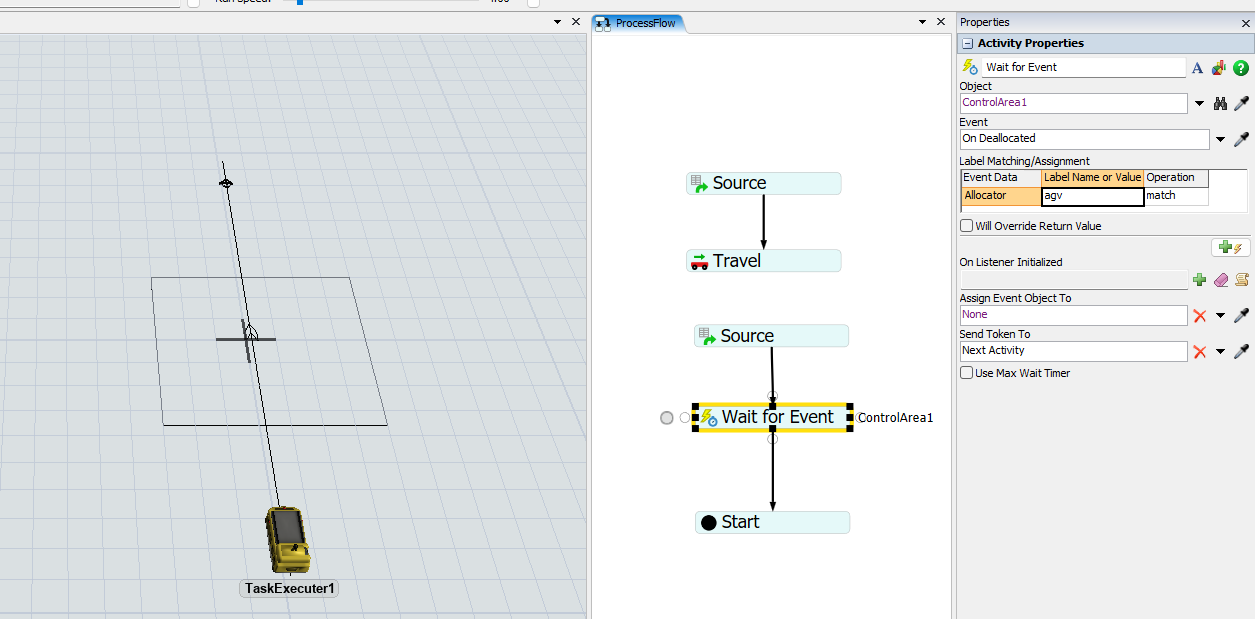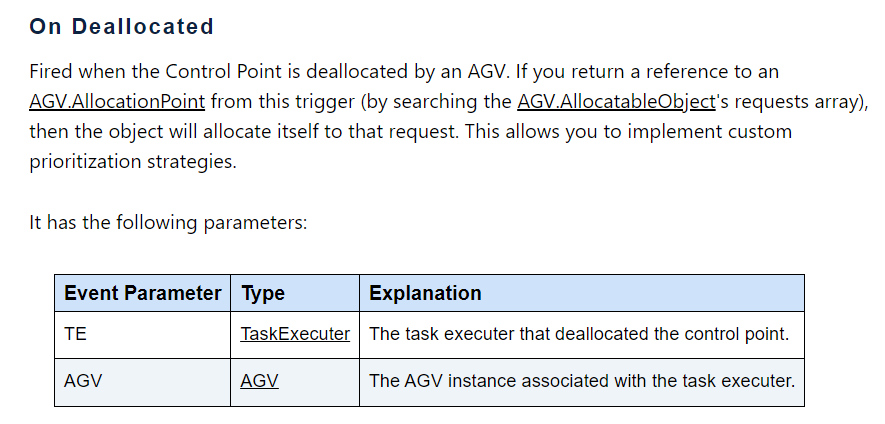question
Wait for event - On deallocation
1 Answer
Hey @Jesús Padilla, sorry we missed this one.
I think having Allocator is appropriate in this case. If you add an On Deallocated trigger to a Control Area (through its Properties), you can open the Code Editor, and it shows this in the code header:
- AGV.AllocatableObject current = ownerobject(c);
- Object allocator = param(1);
- TaskExecuter te = isclasstype(allocator, CLASSTYPE_TASKEXECUTER) ? allocator : 0;
- AGV agv = te ? AGV(te) : 0;
The only parameter passed into this trigger is identified as the allocator and initialized as an Object. The code then tries to cast allocator as both a TaskExecuter and an AGV to make it easier to access the properties for both classes.
The On Deallocated trigger can be used to make custom prioritization strategies, and the parameters (TE and AGV) might be used elsewhere in the software too, but I'm not sure about that. But since the trigger can be used elsewhere, I think that is why we have the parameters described in the user manual.
I guess the only thing is if you were to try to set up the On Dellocated trigger for custom prioritization using Process Flow, you may want to set up additional labels on the token for TE and AGV, using similar code to how the code of the trigger does it.
question details
6 People are following this question.


